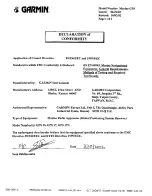
Townsend Labs Sphere L22 Precision Microphone System Guide
Using the Sphere L22 System
31
Monitoring the Direct Analog Microphone Output
To monitor the direct analog output:
1.
Connect the front and rear mic outputs to your mic preamp (either standalone or as part of your
audio interface).
2.
Route the front output of the Sphere mic to your monitor destination.
3.
Route the front and rear mic outputs to your audio interface.
This enables recording and processing via the Sphere plug-in after tracking is completed.
Many audio interfaces include low-latency hardware mixers (e.g., Apogee, MOTU, Roland, and
Presonus) that provide an easy way to create monitor outputs for Sphere.
To monitor using a low-latency mixer in an interface:
1.
Set your DAW to record the Sphere mic outputs.
2.
In your audio interface control panel, set up an alternate mix to route the front mic channel to your
headphones or other monitor destination.
See your audio interface
’
s user manual for more information about how to create monitoring paths.
Microphone Positioning
To get comparable results with a conventional microphone, it is essential that you properly position
the Sphere mic. Even a few millimeters difference in mic position can have a significant effect on the
sound.
For example, let
’
s say you found a great setup for a Neumann U67 on a guitar amp, but do not want
to risk taking your prized U67 on the road. Instead you can use the Sphere L22 and leave the U67 in
the studio. However, to obtain the same sound, you must place the Sphere L22 in precisely the same
position as the U67.
Because it is the position and orientation of the capsules that must be precisely aligned, not the mic
bodies, this is not as simple as it seems. It is often difficult to see exactly where the capsules are located
behind the grill. We recommend using a high intensity flashlight to see where the capsules are
positioned.
Содержание Sphere L22
Страница 1: ...Precision Microphone System Hardware and Software Guide Version 161003 ...
Страница 2: ......
















































